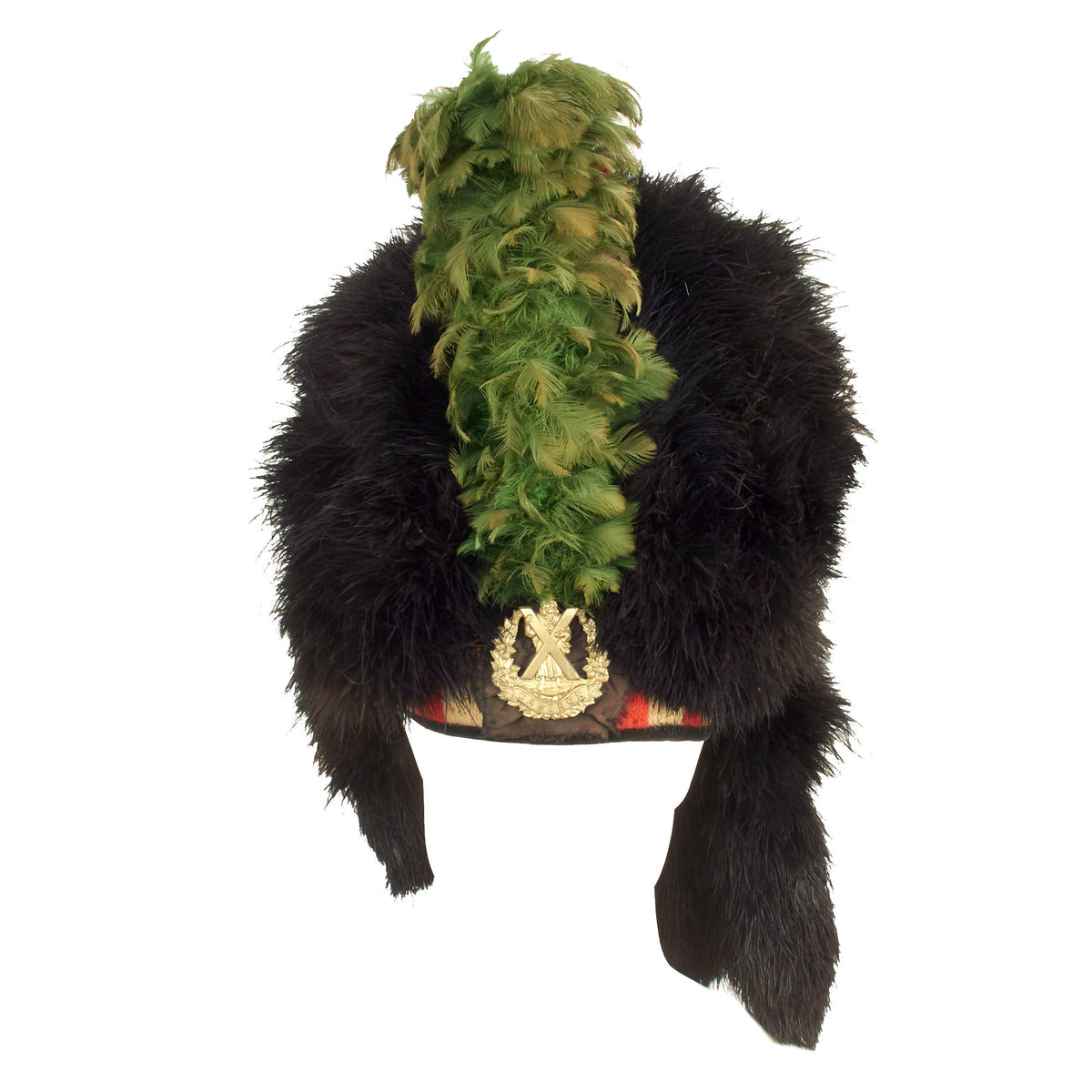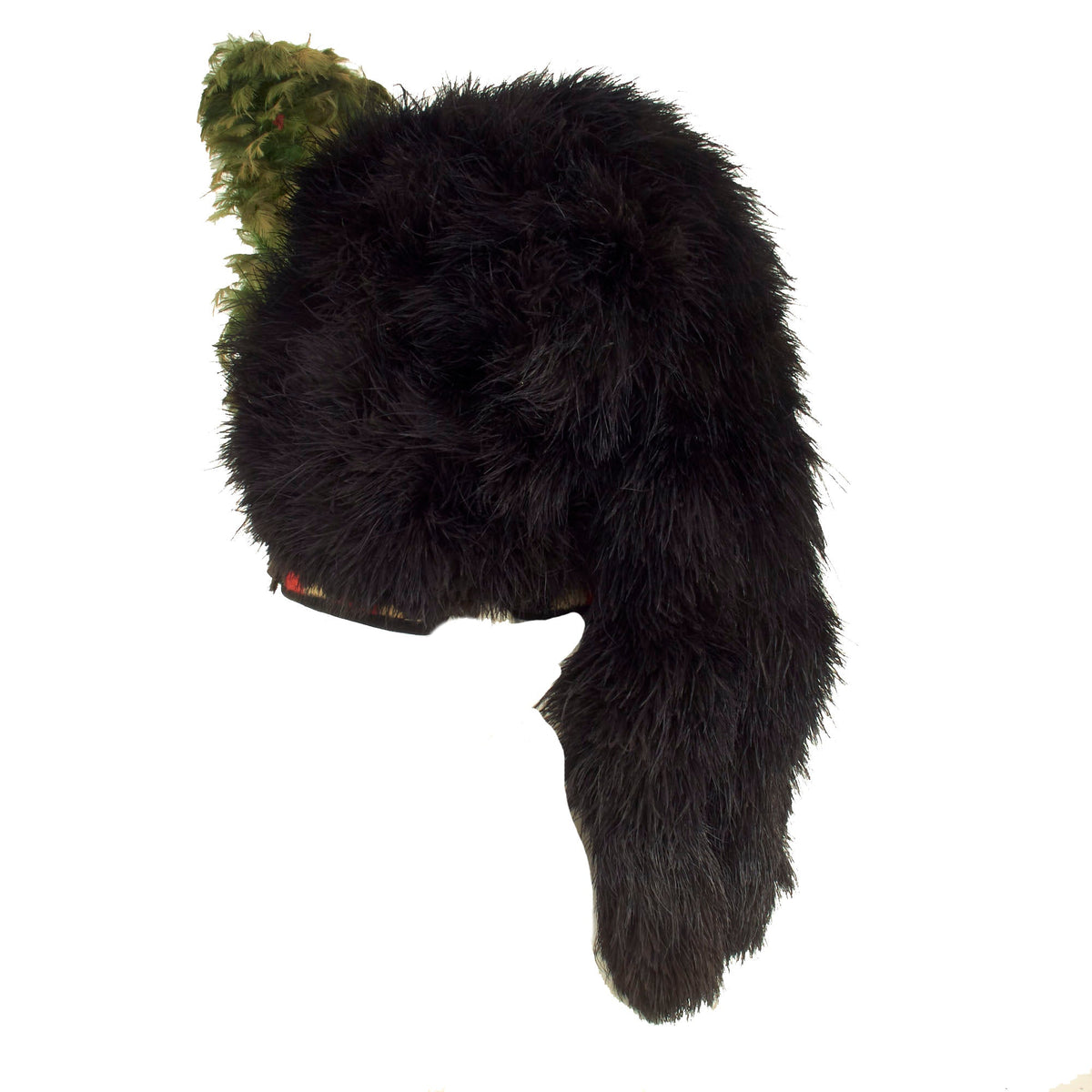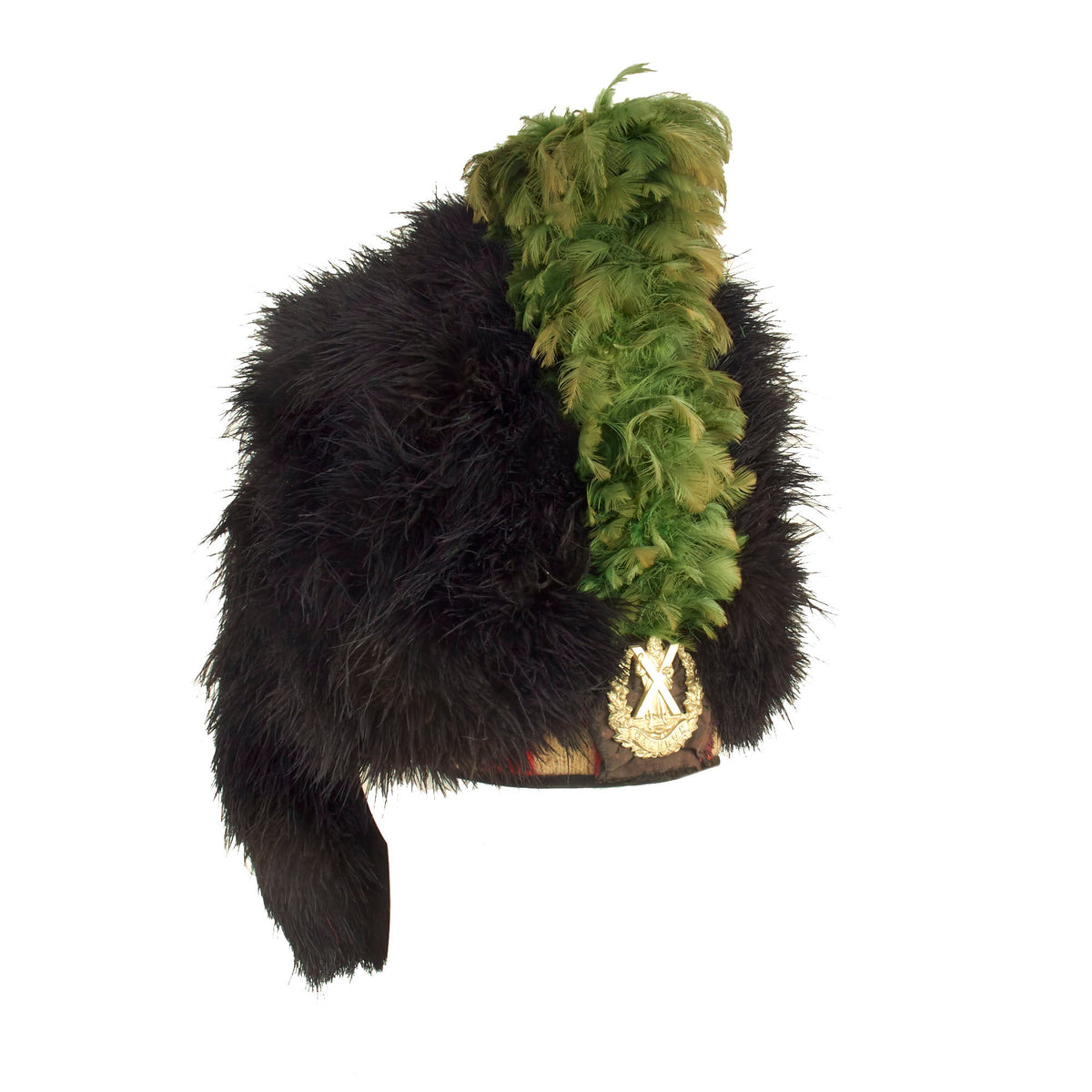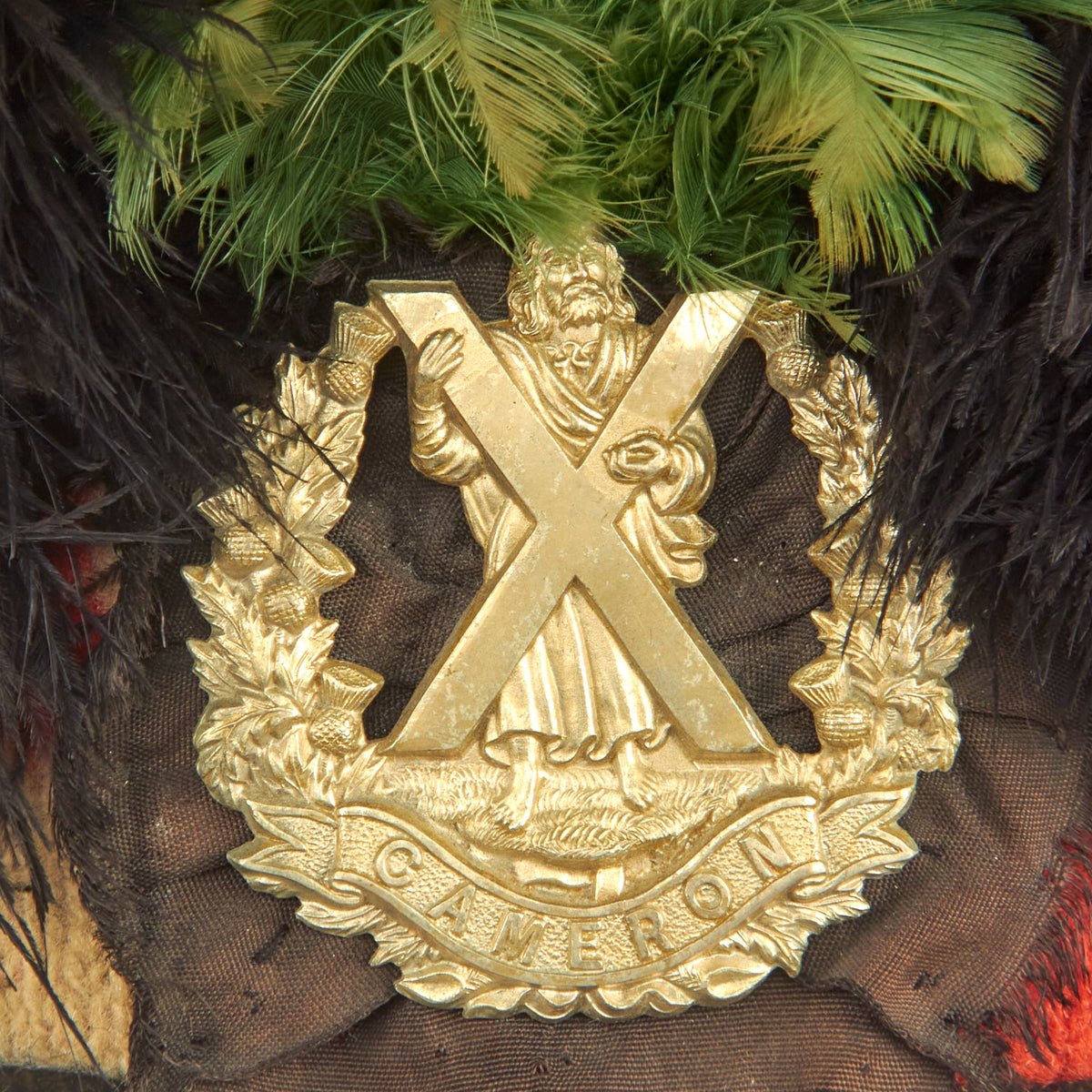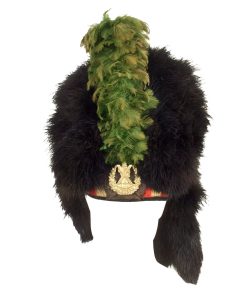Original British WWI Era 79th (The Queen’s Own Cameron Highlanders) Scottish Feather Bonnet Original Items
$ 695,00 $ 208,50
Original Item: Only One Available. This is a genuine World War One era Scottish Regimental Feather Bonnet, the classic military headdress of the “Highland” regiments in the British armed forces. These were used mainly by the Scottish Highland infantry regiments of the British Army from about 1763 until the outbreak of World War I. Originally the bonnet was made from cloth, but over time they evolved, influenced by the large feather head dresses that Native Americans wore. The 42nd (Highland) Regiment of Foot specifically was noted for having “disfigured” their bonnets during their service in the Americas, which started with the Seven Years war. Later the bonnet gained an internal frame that gives it the famous high profile. These are now mostly worn by pipers and drummers in various bands throughout the world, as well as for parade occasions.
This bonnet has the usual wool white, red and navy blue “diced” checkerboard around the bottom band, with a black “tail” on the side which has four separate sections. The left side of the helmet has what appears to be an original 79th (The Queen’s Own Cameron Highlanders) Regiment cap badge, where the correct WWI period Green Hackle Plume of the is installed. The frame of the bonnet is constructed of wire which is wrapped in cotton. Size is approximately 6 3/4 US (54cm).
The leather liner sweatband is unfortunately missing, with the tan rayon crown lining. The original manufacture label is unfortunately no longer visible.
Overall a very pleasing display piece dating from around the Great War and before WWII.
The Queen’s Own Cameron Highlanders or 79th (The Queen’s Own Cameron Highlanders) Regiment of Foot was a line infantry regiment of the British Army, raised in 1793. It amalgamated with the Seaforth Highlanders (the Duke of Albany’s) to form the Queen’s Own Highlanders in 1961.
The regiment was raised as the 79th Regiment of Foot (Cameronian Volunteers) on 17 August 1793 at Fort William by Sir Alan Cameron of Erracht, a cousin of Cameron of Lochiel. Initially mustered from among members of the Clan Cameron in Lochaber, the regiment eventually recruited from across the Highlands, and indeed, seldom elsewhere.
Fast Shipping with Professional Packaging
Thanks to our longstanding association with UPS FedEx DHL, and other major international carriers, we are able to provide a range of shipping options. Our warehouse staff is expertly trained and will wrap your products according to our exact and precise specifications. Prior to shipping, your goods will be thoroughly examined and securely secured. We ship to thousands clients each day across multiple countries. This shows how we're dedicated to be the largest retailer on the internet. Warehouses and distribution centres can be located throughout Europe as well as the USA.
Note: Orders with more than one item will be assigned a processing date depending on the item.
Before shipping before shipping, we'll conduct a thorough inspection of the items you have ordered. Today, the majority of orders will be delivered within 48 hours. The delivery time will be between 3-7 days.
Returns
The stock is dynamic and we cannot completely manage it because multiple stakeholders are involved, including our factory and warehouse. So the actual stock may alter at any time. It's possible that you may not receive your order once the order has been made.
Our policy is valid for a period of 30 days. If you don't receive the product within 30 days, we are not able to issue a refund or an exchange.
You can only return an item if it is unused and in the same state as the day you received it. You must have the item in its original packaging.
Related products
Uncategorized
Uncategorized
Uncategorized
Uncategorized
Band of Brothers ORIGINAL GERMAN WWII Le. F.H. 18 10.5cm ARTILLERY PIECE Original Items
Uncategorized
Uncategorized
Uncategorized
Armoured Fighting Vehicles of the World: AFVs of World War One (Hardcover Book) New Made Items
Uncategorized
Uncategorized
Uncategorized
Uncategorized
Uncategorized
Armored Burgonet Helmet & Polearm from Scottish Castle Leith Hall Circa 1700 Original Items
Uncategorized
Australian WWII Owen MK1 Machine Carbine SMG Custom Fabricated Replica with Sling Original Items
Uncategorized
Uncategorized
Uncategorized
Uncategorized
Uncategorized
